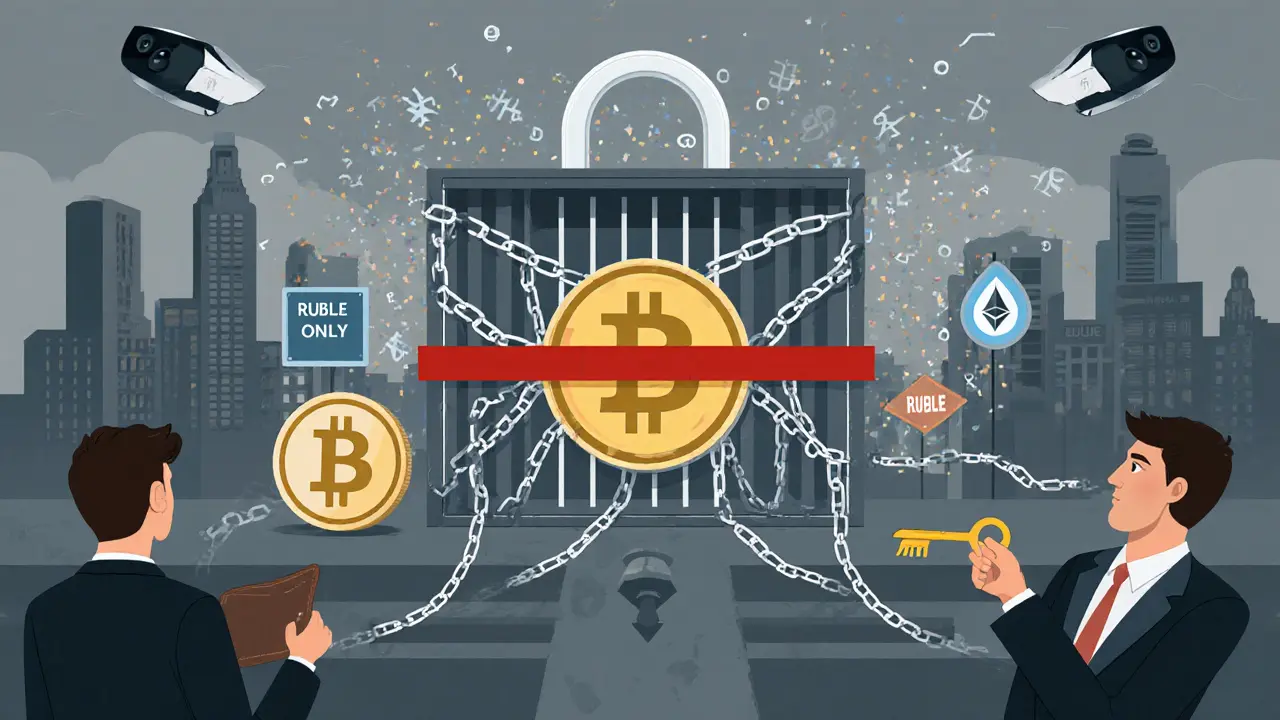Russian Central Bank: Crypto Regulations, Digital Ruble, and What It Means for Traders
When you hear Russian Central Bank, the official monetary authority overseeing Russia’s financial system and currency policy. Also known as Bank of Russia, it has taken one of the most aggressive stances against decentralized finance in the world. Unlike many central banks exploring digital currencies, the Russian Central Bank doesn’t just study crypto—it actively blocks it. Since 2021, it has pushed for a full ban on crypto payments, calling Bitcoin and Ethereum tools for money laundering and financial instability. But here’s the twist: while it cracks down on public crypto use, it’s quietly building its own digital currency—the digital ruble, a state-controlled central bank digital currency (CBDC) designed to replace cash and bypass Western financial systems. This isn’t innovation for convenience. It’s a strategic move to shield Russia from sanctions and control every ruble that moves.
The digital ruble, a blockchain-based currency issued directly by the Russian Central Bank. Also known as CBDC, it lets the government track every transaction in real time—something no Bitcoin wallet can offer. Unlike decentralized crypto, the digital ruble has no anonymity, no cross-border freedom, and no user control. You can’t hold it in a wallet you own. You need a bank account approved by the state. It’s not about financial inclusion. It’s about financial surveillance. And while Western countries debate CBDC privacy risks, Russia has already built its version—with zero public debate. Meanwhile, the Russian Central Bank keeps blocking crypto exchanges, shutting down peer-to-peer platforms, and pressuring banks to cut ties with crypto users. In 2023, it even tried to ban crypto mining outright. The message is clear: only state money is allowed.
What does this mean for you? If you’re trading crypto from Russia, you’re either using offshore platforms under the radar—or you’re avoiding crypto entirely. Many Russians turned to peer-to-peer markets like LocalBitcoins or Telegram-based traders to bypass restrictions. But even those channels are getting harder to use. The Russian Central Bank works closely with law enforcement and internet regulators to shut down access. And if you’re outside Russia but holding crypto tied to Russian users? You’re at risk too. Some exchanges now flag Russian IP addresses or block transactions linked to Russian wallets. The Russian Central Bank didn’t just create a policy—it created a global ripple effect.
Below, you’ll find real reviews and breakdowns of crypto platforms that Russian users tried—and why most of them failed. From fake DEXs pretending to work in Russia to exchanges that suddenly vanished after sanctions hit, this collection shows what happens when a central bank decides crypto is too dangerous to exist. No theory. No fluff. Just what actually works (and what gets you blocked).
Russian Central Bank Crypto Oversight Policies and Regulations in 2025
Russia's Central Bank enforces one of the world's strictest crypto frameworks: domestic payments are banned, international trade is the only exception, and every transaction is monitored. Banks face extreme capital rules, and only qualified investors can access a tightly controlled experimental regime.
Details +